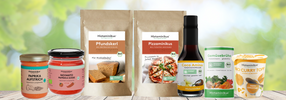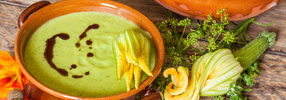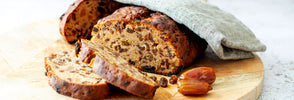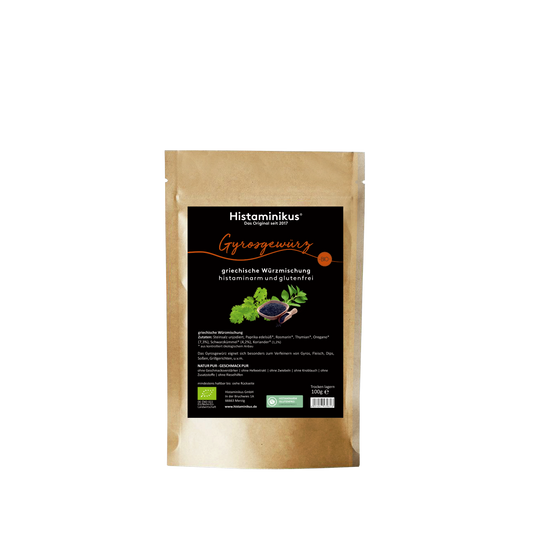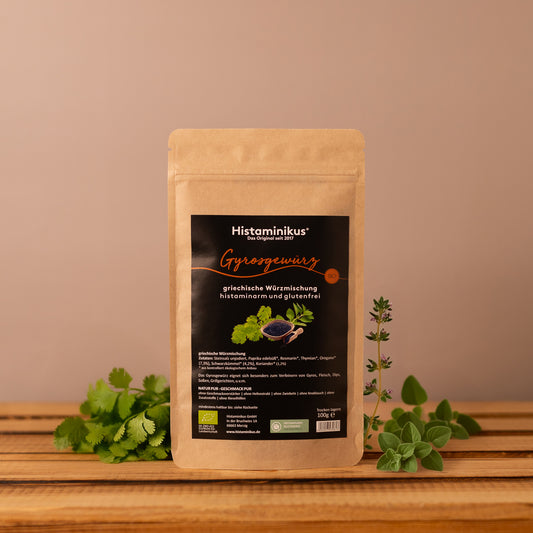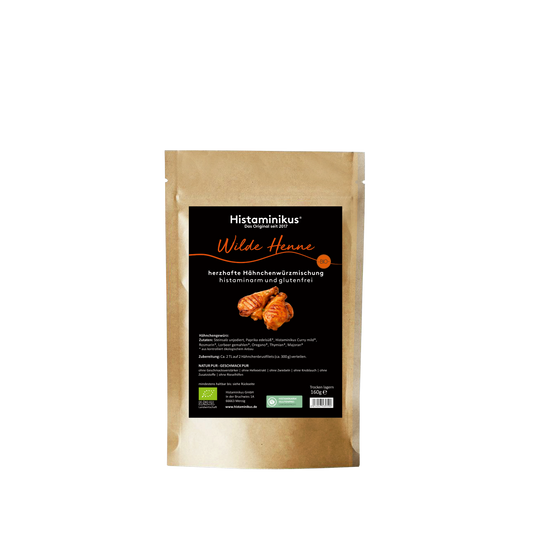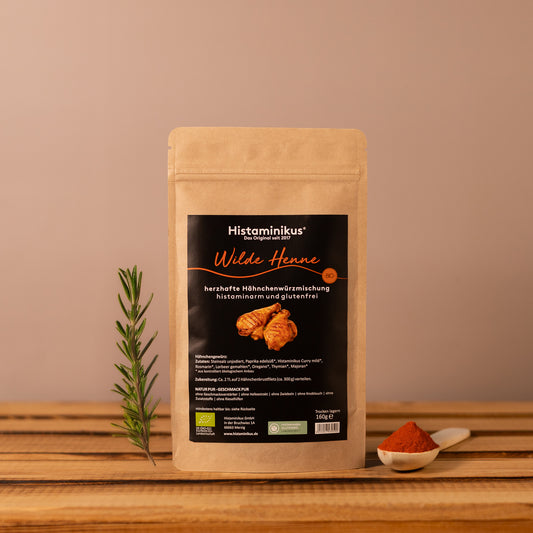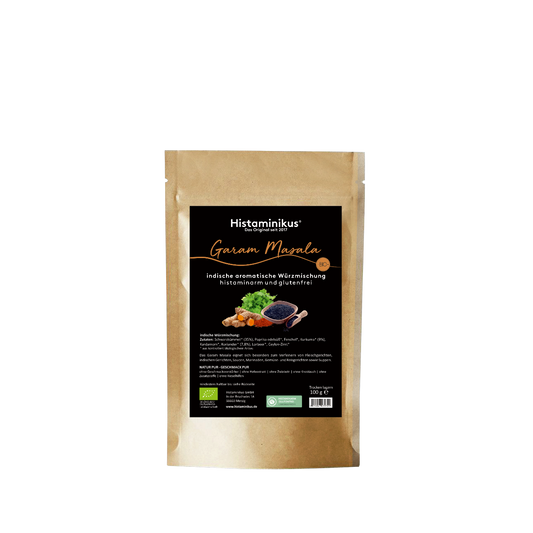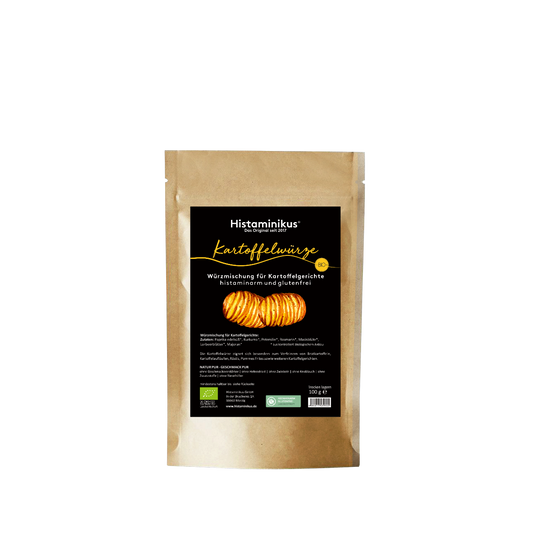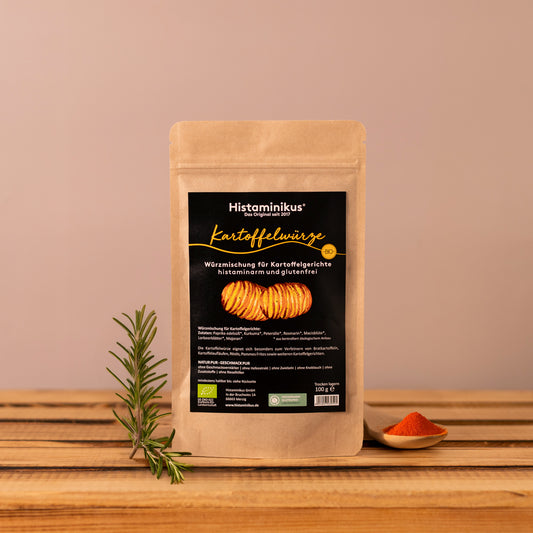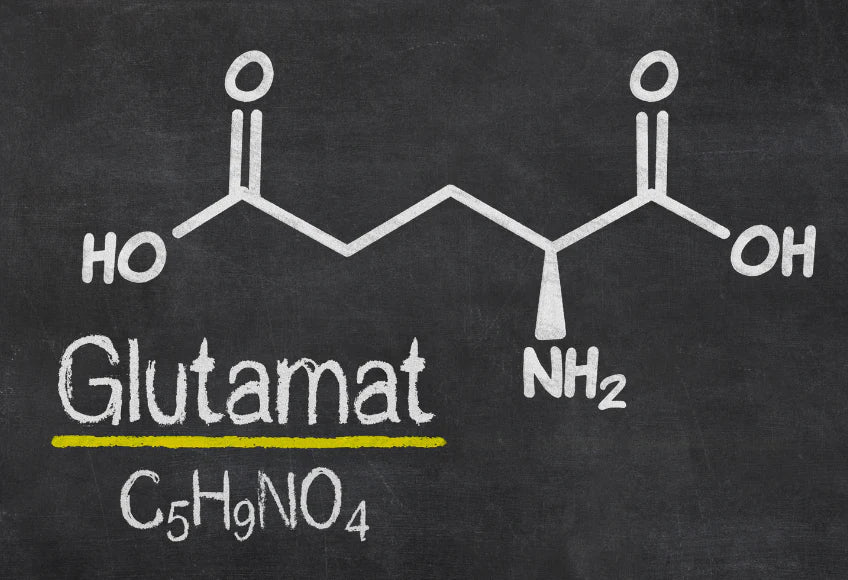
Glutamat - the hidden ingredient
Certainly you have the word "Glutamat" (also mononatrium glutamate) and you have already encountered a wide variety of ingredients. Glutamate belongs to the food additives and becomes As a flavor enhancer used. In industry, glutamate is indispensable because it is a cheap raw material that makes a thread dish a tasty food.
What sounds so good and simple is but rather questionable for many people. Especially as a affected person of a histamine intolerance, you should leave your fingers from glutamate -containing, since glutamate not only Histamine -containing, but also a histamine liberator.
Short digression L-glutamine, glutamic acid and glutamate:
L-glutamine (amino acid) and glutamate (flavor enhancer) please do not confuse! Glutamate as a flavor enhancer causes histamine symptoms, but L-glutamine is well tolerated in a hit. It is even very beneficial for intestinal health and the immune system.
L-glutamine is a semi-leveling amino acid that is most common in our body (approx. 60%). L-glutamine and the glutamic acid are connected, as long as L-glutamine from glutamic acid can be formed from the body itself. The glutamic acid is therefore the preliminary stage of L-glutamine. In the body, L-glutamine and glutamic acid fulfill important functions, whereas industrial flavor enhancers (glutamate) have a negative impact on our health.
Glutamate vs. glutamic acid
Glutamate is the salt of amino acid glutamic acid. The natural glutamic acid is an amino acid and an important component of proteins. In the body, it is required for many metabolic processes and plays an important role, among other things, for energy supply. The glutamic acid is naturally already contained in many foods that we consume daily (e.g. oatmeal, legumes, poultry, meat, eggs, carrots). In the natural form it is important for our body, whereby we are only small quantities about the natural! Record nutrition.
To consume the glutamate of a bag soup, you would have to eat 20 kg of carrots or 10 kg spinach or 250 eggs or 7 kg onions. I think nobody can do that and there is no risk of taking too much of glutamate over the natural diet. In this comparison, however, you will notice which extremely high amounts of glutamate can be found in a bag soup. And this is the only reason that the consumer has a unique taste experience, which unfortunately goes to the disadvantage of his health and taste buds.
Which e-numbers hides glutamate behind?
- E620: Glutamate
- E621: Mononatrium glutamate, sodium glutamate
- E622: Monocalium glutamate, potassium glutamate
- E623: Calciumdiglutamat, calcium glutamate, calcium glutamate
- E624: Monoamammonium glutamate, ammonium glutamate
- E625: MagnesiumDiglutamat, magnesium glutamate
Glutamat has become more and more discredited in recent years. Large parts of the population suddenly make sure that the vegetable broth or other industrial foods do not include flavor enhancers or glutamate.
Of course, the food industry reacted immediately and since then you have been able to read "without flavor enhancers", "without glutamate" or "without a yeast extract" on many foods. But since the industry hardly manages without glutamate and the taste of the food without glutamate would "worsen" drastically, many terms are now used that simply replace the term glutamate.
What other terms is glutamate behind?
- All terms in which there is "spice", e.g. vegetable spice
- Yeast extract
- Nutritional
- Protein isolates
- Wheat protein
- Milk protein
- Hydrolized protein
- Glutamate can also hide behind "aroma"
- Grained broth
The industry has also come up with a very special trick, so that it no longer has to list glutamate on the list of ingredients and the consumer is ultimately deceived: in the above terms and in many other glutamat -containing additions, the glutamate is not in isolated form, but in combination with other substances. In terms of law, it does not have to be declared as a flavor enhancer or glutamate. Due to these legal provisions, the product can even carry the "without added glutamate" or "without flavor enhancers", although large amounts of glutamate are contained.
Histaminikus waives such industrial tricks and deceptions. None of our food contains glutamate or flavor enhancers in any way. Our premise is that we only use purely natural ingredients - for a natural taste experience.
The difference between nutritional, yeast extract and glutamate
What is the difference between nutritional, spice, yeast extract and glutamate? Incidentally, “spice” can also be used in organic products. So be careful!
- Nutritional: It consists of killed yeast mushrooms and is mostly used as a basic ingredient for many vegetarian spreads. It is rich in glutamate.
- Yeast extract and spice: A concentrate is made from the yeast mushrooms just mentioned, which contains many times over glutamate.
- Mononatrium glutamate, glutamate: is the chemical and absolutely 100%glutamate. Fermentation is obtained in which genetically modified bacteria are used.
The effects of glutamate on our body:
Glutamat as a food additive has many effects on our health, not only as a person affected by histamine intolerance. Various negative effects of glutamate have already been demonstrated in a number of studies. Science does not quite agree on some theses, but the indications that a high glutamate consumption could still be questionable. Of course, the dose always makes the poison.
Glutamat blocks the saturation regulation: Glutamat means that you eat more than you should have so that you can get full at all. In 2006, Prof. Michael Hermannussen from the Kiel University observed rats in 2006 to give high doses of glutamate. Your food intake doubled. After 30 as well as after 90 days, those rats lined with glutamate had eaten twice as much as those of the control group. It is not finally clarified whether the reason is simply the good taste or - as some experts claim - the natural saturation regulation in the brain is overridden.
Glutamat violates the brain: There are certain factors that can make the blood-brain barrier more permeable, e.g. heavy metals (amalgam) or other poisons in the body, high blood sugar levels, high blood lipid levels or infections. If one of these factors is present, glutamate can get into the brain more easily. Animal test studies found that glutamate caused tiny cavities and injuries in the brain regions. This study was again confirmed by Professor Konrad Beyreuther at the Center for Molecular Biology of the Ruprecht-Karls-Universität in Heidelberg. Here, too, certain nerve cells have died through the glutamate. Professor Beyreuther therefore considers Glutamat to be a nerve poison and believes in a possible connection between glutamate and the diseases of Alzheimer's or Parkinson's. In experiments, other scientists were also able to find that very large amounts of glutamate in various brain regions led to destructive effects.
Chinese restaurant syndrome: When making people, glutamate triggers nausea and vomiting. This is also called the Chinese restaurant syndrome, since these symptoms often occur after visiting Chinese or Asians.
Glutamate and migraines: Glutamate can be a trigger for migraines or headaches. Migraine patients in particular are very sensitive to this.
Glutamat and diabetes: In 2011 it was found that diabetics have a different amino acid composition in the blood than non-diabetics. The amino acid, which is most common in diabetics, is the glutamic acid or its salt, the glutamate. It is now also known that glutamate stimulates insulin release. Therefore, diabetics should feed as glutamate as possible.
Glutamat overrides the sense of taste: Anyone who often consumes "flavor enhancements" loses the sensitivity to the fine nuances of natural food aromas. Since our flavor nerves are falsified and oversteered by the glutamate, natural foods then taste extremely bland and after "nothing". As a result, we unlearn how nature tastes. However, the taste buds can change again by simply feeding yourself for a while without glutamate and only with natural foods. Then you will find out how delicious natural foods are. Industrially processed products will then taste much too overwarm because the taste buds have normalized again.
How to season without glutamate?
-
GyrosGrot bio
5.0 / 5.0
(5) 5 total reviews
Regular price €8,99 EURRegular priceUnit price 89,90€ / per kg -
Wild hen chicken spice organic
4.82 / 5.0
(11) 11 total reviews
Regular price €8,99 EURRegular priceUnit price 56,19€ / per kg -
Garam Masala Bio
5.0 / 5.0
(2) 2 total reviews
Regular price €8,99 EURRegular priceUnit price 78,17€ / per kg -
Potato wort organic
4.33 / 5.0
(6) 6 total reviews
Regular price €8,99 EURRegular priceUnit price 89,90€ / per kg
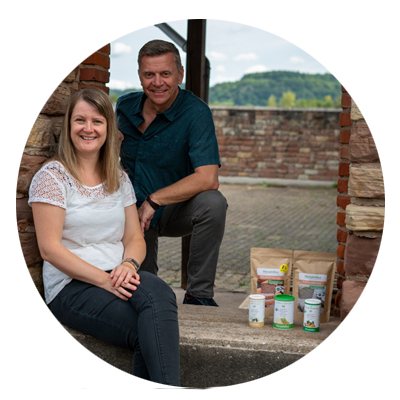
From those affected for those affected
We are Thomas and Michaela Zinser, founder of Histaminikus.
Because of the own histamine intolerance of Michaela and our son, we founded Histaminikus. The frustration does not find any suitable histamine food has spurred us to develop low -histamine food.
We would like to give you back a piece of quality of life. Feel free to look around with us.
Kind regards
Thomas and Michaela

